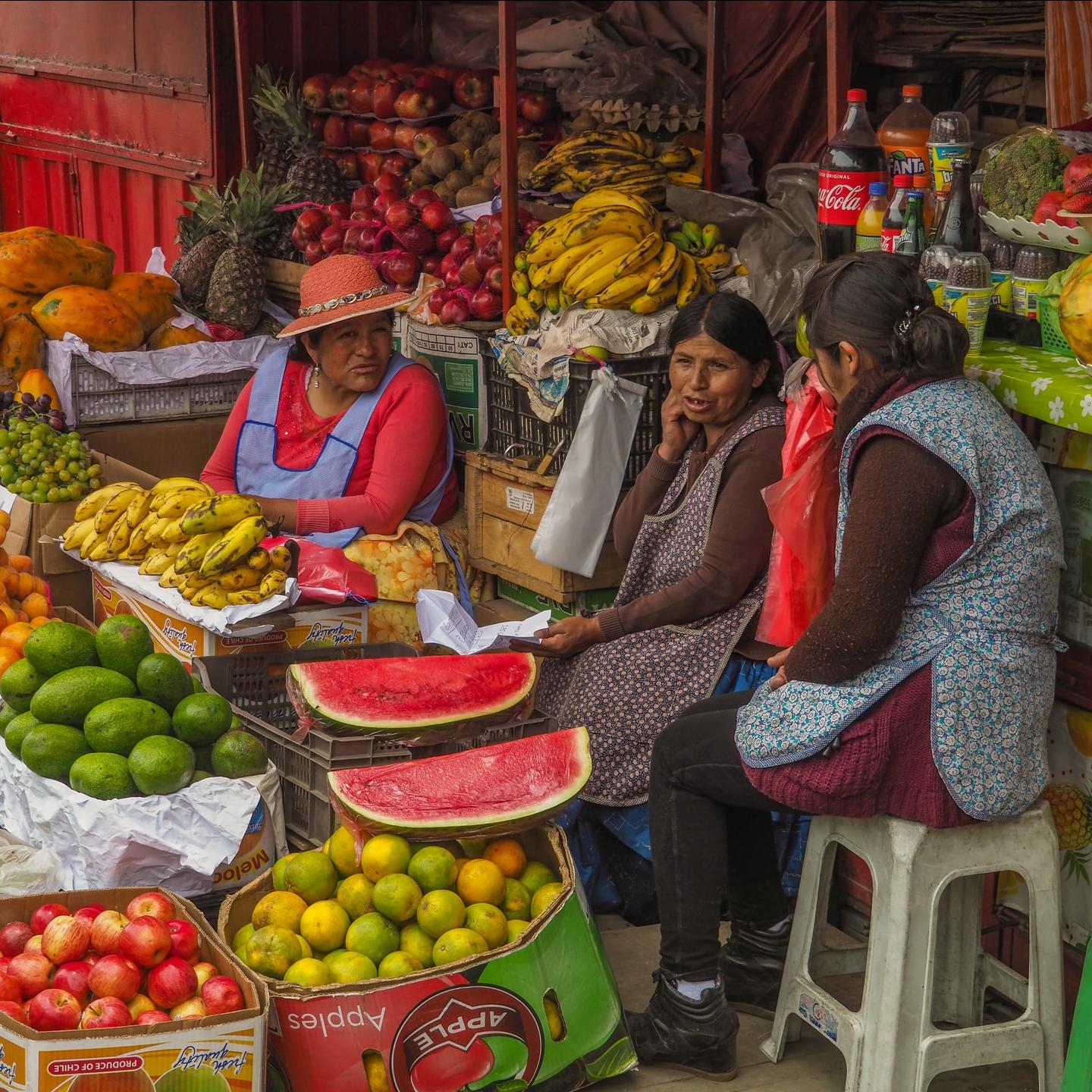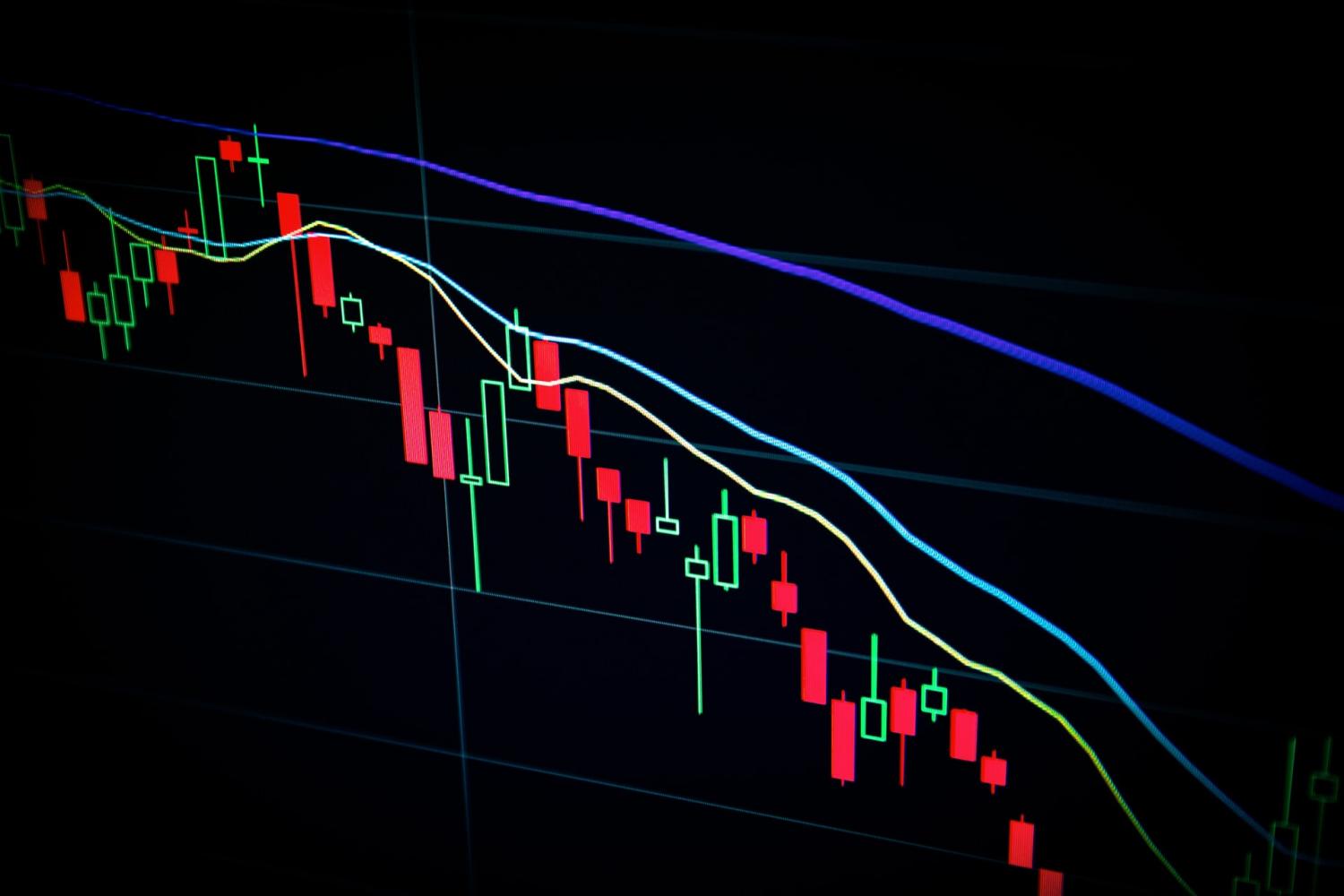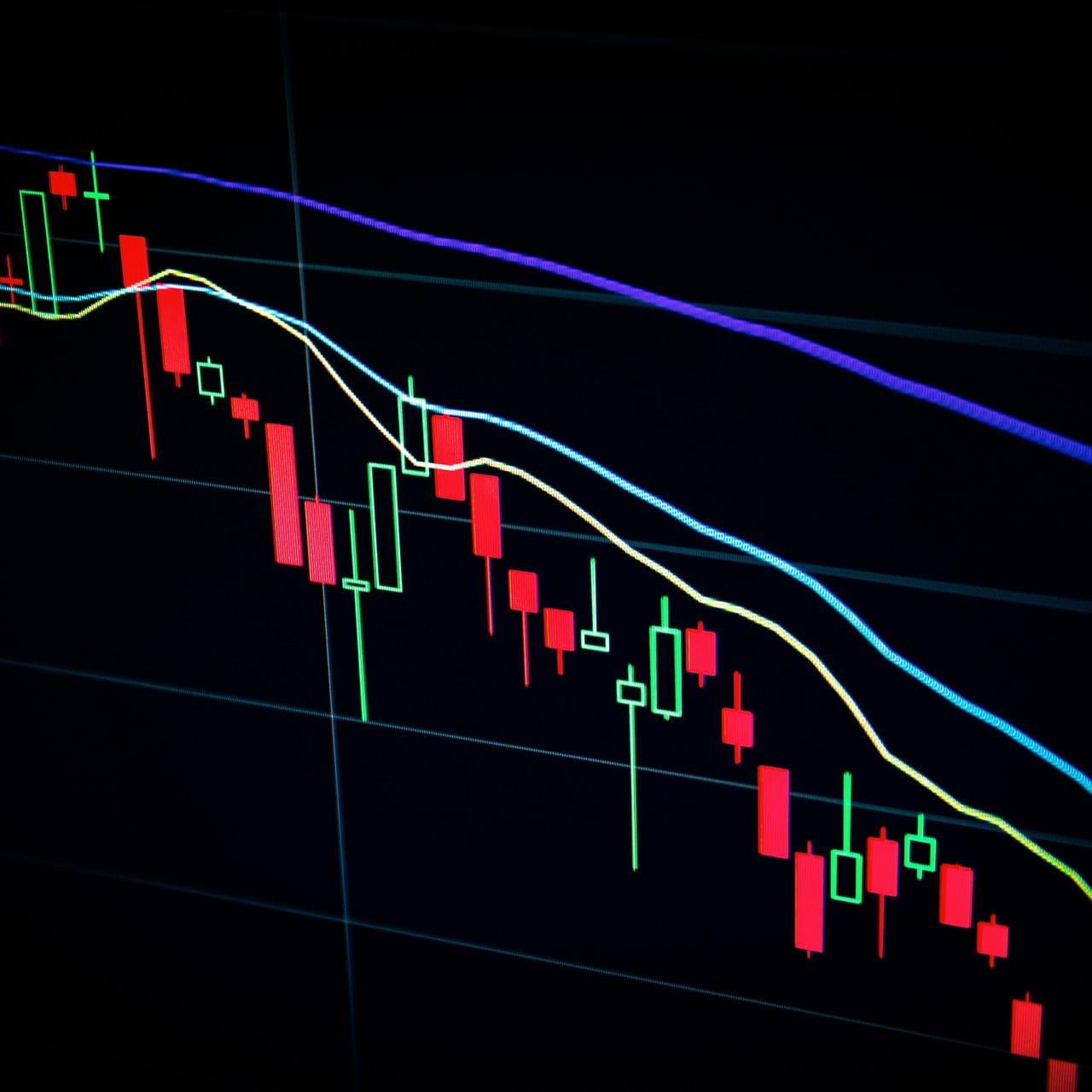This App Builds Upon Swedish Equality Ethos in Personal Finance


Financial inequity has become a significant factor in the U.S.’ growing societal rift. State and local governments have been making strides to the address the issue by raising the minimum wage and requiring personal finance education in high schools. In fact, Florida became the 11th state to mandate personal finance coursework as part of high school graduation criteria. Twenty-six other states have a combined 54 personal finance education bills pending.
Of course, financial literacy goes hand-in-glove with living wages. So, teaching the next generation of voters to budget, to build savings, to invest, to realize financial goals and to manage debt is an essential part of creating a more equitable society. U.S. Treasury Secretary Janet Yellen told members of the federal government’s Financial Literacy and Education Commission last May that although not a panacea, “…education about how to navigate personal finances can have a lasting, positive impact on people’s lives.”
However, the U.S. is somewhat late in coming to this realization. Sweden recognized the issue as far back as 2011 when the country National Agency for Education introduced a personal finance education curriculum to the school system. The financial technology sector saw the gap in financial literacy extended to working adults. To that end, in 2012 George Friedman founded Swedish start-up Qapital, a personal finance management (PFM) app. Two years later, the company launched in the U.S., where it is now has dual headquarters. To date, Qapital has helped its users save almost $3 billion collectively.
Qapital Co-Founder and Swedish national Katherine Salisbury points out that American financial technology companies’ PFM apps are akin to pay-day lending with the primary intent of profiting off of users. “In Sweden, there is a fundamental belief that people should be able to live a financially stress-free life so they can live and thrive,” she said. “Qapital questions why it’s so hard for 80 percent of Americans to get through their day without having severe financial stress and we want to fix that since government and society aren’t. We want to handle privately for our customers things that the government handles for people in Sweden.”
Salisbury cites retirement as one example. Typically, users turn to Qapital when they’re about to embark on a milestone life event that requires some financial planning such as starting a new job, getting married, having a baby, buying a home or even starting a freelance career.
The app was designed to assist users in reaching specific financial goals by helping them to essentially reallocate disposable income in a way where they don’t feel like they’re downgrading their lifestyle. Salisbury describes the process as helping users to tweak some behaviors and habits to effortlessly reach their goals.
“Our users are looking for a simple way to take control of their money that doesn’t leave them feeling overwhelmed or deprived,” said Salisbury. “They want a system that helps them make good financial decisions effortlessly.”
The app also offers a budgeting feature, as it goes hand-in-glove with the concept of moderating spending habits, in addition to a robo-investment feature.
Qapital users have also found another purpose for the app: teaching their children about personal finance and particularly, goal setting and making tradeoffs in order to realize their financial objectives. Currently, Qapital also has a joint finances feature, a “Qapital Dream Team,” for couples who share a common aspiration. According to Salisbury, the company is now looking at adding debit cards for kids that would be tied to a finance account with their parents. But even without these features, parents are still opening accounts with the intent of teaching their kids about money management in order to teach them to save for purchases like an Xbox or iPhone.
The concept of kids’ debit cards certainly isn’t new, as major U.S. financial institutions such as Chase and CapitalOne already offer them. But a new Qapital feature designed specifically for children would certainly align with the company’s Swedish ethos.
At the 2021 Sweden Global Money Week, the country’s financial supervisory authority Finansinspektionen joined forces with The Economy Museum, the Swedish Bankers Association and seven other financial entities to launch “Pengalabbet,” or The Money Laboratory, an online educational game to teach kids about everyday economics. The Swedish Bankers Association also created a Money Quiz and several online lectures for secondary school students.
Hopefully Janice Yellen and the U.S. Financial Literacy and Education Committee are taking note of these additional educational tools.
Image credit: Tirachard Kumtanom via Pexels
Using Smart Tech to Improve Work and Workplaces


During November 2021 alone 4.5 million people quit their jobs—the highest number on record. The pandemic work experience encouraged many employees to draw a line in the sand between what’s important (family, flexibility, and free time) and what’s not (toxic work cultures that lead to exhaustion, mistakes and ultimately burnout.) Black, Indigenous and people of color (BIPOC) have particularly felt the strain of office life with 97 percent wanting a hybrid or full-time remote working model (compared with 79 percent of white knowledge workers in the U.S.)
Digital tech was instrumental in creating the always-on model of work. For instance, the average office worker checks their email 74 times a day, creating a never-ending game of email whack-a-mole. However, that was the last generation of digital tech. There is a new generation that has the potential to remake work in more humanizing ways.
“Smart tech” is an umbrella term we coined for advanced digital technologies that make decisions for people and instead of people. It includes artificial intelligence (AI) and its subsets and cousins, such as machine learning, natural language processing, smart forms, chatbots, robots, and more. Its use is skyrocketing and it is being embedded in every functional area of company life from HR to communications, accounting and service delivery.
Smart tech is currently best at doing rote tasks like answering the same questions over and again online or automatically reconciling budgets with real-time numbers. When companies find the sweet spot between smart tech and people, it creates what we call the “dividend of time.” This new time can be used to do things that only people can and should do: build relationships, tell stories, and solve problems. This is also time that can be used to reduce burnout and re-humanize workplaces — but only if it is implemented carefully and strategically.
Using smart tech well isn’t a technological challenge but a leadership imperative. The C-Suite will be making choices about when, where and how to use smart tech. For instance, they can choose to institute “bossware” surveillance technology to track employees activities throughout the day. Or they can use software like CultureX to remind employees to stretch and move and take breaks. They can grab smart tech products off -the-shelf without asking whether and how the system may be biased against women and people of color, or they can use software like UInclude that has anti-bias DNA built right into the company. UInclude drafts job announcements based on extensive research and data that increases the quality and diversity of job applicants. Why is this so important to this particular tech company? Because UInclude was founded by three women of color who have made reducing bias in hiring a core principle of their work.
Here are a few ways company leaders can use smart tech to improve work and workplace cultures:
Invest in online chatbots. Chatbots are online conversational interfaces. They are the fastest growing use of smart tech by organizations and the least expensive way to begin using the technology. They are available 24/7 to answer questions like “When is your store open?” and “Where are you located?” Chatbots relieve staff from constant interruptions. The addition of chatbots allows front line staff can shift their focus to problem-solving, empathy, and ultimately inspiring repeat customers.
Improve workflow. Workflow bottlenecks are enormous sources of inefficiency and frustration for workers. “Intelligent virtual assistants” can schedule meetings without the back and forth that even a tool like Doodle involves by regularly cruising through participant’s files, correspondence, and calendars. Poorly designed meetings are also a huge organizational time suck. Meetings, particularly those that happen back-to-back, can be petri dishes for miscommunication and microaggressions as well as create stress if people talk too much or if they don’t engage enough. Otter.AI is among the many smart tech tools that can help make meetings more efficient. It provides voice to text transcripts for meetings. It can also provide metrics on what percentage of airtime participants took up to help managers facilitate more balanced conversations. Smart tech products can also help make meetings more inclusive by automating captioning and language translation.
Improve physical health. Smart tech can support physical safety and health by monitoring environmental risk factors, tracking worker health indicators, altering job profiles and ways of working that improve physical health, and nudging workers to healthy habits and behaviors. For example, smart tech can encourage work-life boundaries, and encourage employees to move, take screen breaks, and stretch. It’s good for workers and organizations to keep everyone healthy.
Smart tech is not a panacea for improving work or workplaces. However, when used carefully and strategically, when piloted to understand its effect on workers, it can create new time that can be used to re-humanize work and workplaces.
Interested in having your voice heard on 3p? Contact us at [email protected] and pitch your idea for a guest article to us.
Image credit: Pavel Danilyuk via Pexels
Plant-Based Protein Set to Surge in Market Share with Price Parity on the Horizon


Two burgers (one beef, one Impossible Burger), fries and a pumpkin spice milkshake. So, which burger is which, may we ask?
There’s good news for the plant-based protein industry and the planet as a whole in a recent report out by Kearney. As prices become competitive with traditional meat, plant-made alternatives are expected to experience a sudden and dramatic increase in market share. But while price parity could lead to a 20 percent expansion, that increase could in turn further fuel falling prices and lead to a snowball effect where plant-based meat and other proteins are cheaper, and thus potentially in higher demand, than thought possible at present. This is even more true if governments choose to encourage this trend through health warnings and ad campaigns.
The cost to produce plant-based protein is currently about the same as it is to raise and slaughter animals for food, but that is set to change as brands step up production. However, it isn’t production costs that are keeping the price of these alternative products elevated by 50 to 300 percent above regular meat, but rather the need to supply shareholders with continuous returns on their investments while also financing research and development as well as marketing. As these additional costs wane, the resulting price decreases should lead to intensive growth — with a 3 percent increase in market share expected to come from a mere 1 percent drop in price.
So, how long will price matching take? That depends on numerous factors, but a 2021 report from Boston Consulting Group and Blue Horizon expects parity for most meat and dairy items by 2035. Still, many categories are expected to reach it before then. Beyond Meat, for example, intends to have at least one product priced at or below the protein it is imitating by 2024.
Falling prices on plant-based protein isn’t the only issue pushing toward parity. Another element to consider is the rising price of meat. Thanks to a variety of factors that haven’t affected its alternatives, beef is up in price more than 10 percent while other animal proteins are up 22 percent. And while it is estimated that by 2035, 11 percent of the protein that humans eat will come from plant sources, mitigating factors such as increases in the price of animal protein could cause that number to be much higher.
Another factor to consider could be government influence. Many readers likely remember slogans such as Got Milk? and Beef. It’s what’s for dinner. Likewise, consumers could be nudged toward plant-based protein through similar campaigns. On the flip side, warnings against meat consumption can be effective if they are specific and related to health, not just the environment.
Price parity is one thing — meat alternatives that undercut the original present a situation where consumers could potentially find the plant version more attractive. No doubt the rising prices on animal proteins have consumers feeling the pinch, though the increases are still quite a bit shy of the 50.6 percent that has been reported as the average threshold purchasers are willing to accept. But at least one brand has declared its intention to price its entire line of products below real meat competitors. The full ramifications of this remain to be seen. When faced with a cheaper alternative that is comparable in taste, it seems reasonable that real meat could become something to splurge on as opposed to something that is eaten multiple times per day.
Pushback from the meat industry might well be expected, but instead major players are getting into the fake meat game. With big names like Tyson and Unilever involved, it appears the industry has chosen the "if you can’t beat ‘em, join ‘em" tactic.
The advent of generics and private-label products on the scene will undoubtedly have a tremendous effect on price parity — assuming they maintain the taste and mouthfeel of successful name brands. President’s Choice and Aldi already make their own. WalMart’s Great Value has vegan cheese and plant-based chicken patties — not much, but it’s a start. It seems natural to wonder what effect the retail giant could have on prices should it choose to join the fray with a full line of products.
Three-quarters of consumers are willing to consider plant-based protein if it is priced equal to or less than the real thing, according to the Good Food Institute. In the U.S., 57 percent of households already bought a meat alternative in 2020. As price parity approaches, more and more people are willing to include alternatives in their diets, which creates a cycle driving prices down even further. Governments interested in curtailing climate change, biodiversity loss and health issues related to high rates of animal protein consumption could use nudges to bolster this trend. It remains to be seen how consumers will react once the other side of parity is reached and plant-based proteins are cheaper than their animal counterparts. Nevertheless, it is likely to have a huge effect on market share and could lead to dramatic changes in how we eat.
Image credit: Rob Martin via Unsplash
As the War in Ukraine Puts Latin America’s Poor at Further Risk, This U.N. Project Boosts Food Security in Bolivia


A market in La Paz, Bolivia
A financing agreement between the government of Bolivia and the United Nations' International Fund for Agricultural Development (IFAD) will increase the resiliency of nearly 20,000 smallholder Bolivian farmers battling crop shortages in the face of climate change. The funding for the $26.5 million ACCESOS Rural Project will be sprinkled throughout 430 communities and enable the farmers to improve their production of staple foods like potatoes, tomatoes, onions and beans.
The struggle in a region already coping with inflation
The investment hopes to offset raging inflation rates threatening the region by pumping money into high-demand foods and thus keeping prices at bay. High inflation and South America have long been infamously intertwined: For example, hyperinflation paired with political instability and rampant corruption beset Venezuela into a crisis after inflation reached a bewildering 1,300,000 percent in 2018.
After a year of maintaining below average inflation rates compared to other emerging market economies, high inflation again crept into major Latin American markets like Mexico, Brazil, Colombia, Chile and Peru. Soaring food prices, which had already started climbing before the pandemic, are among the biggest inflationary drivers. Supply chain disruptions, lockdown measures and the unrelenting presence of climate change spiked food prices at an accelerated rate. The war in Ukraine will worsen this reality in Latin America.
“After the sanctions imposed by the United States and Europe, we can expect interruptions in global supply chains, this can translate into product shortages and price increases due to social and political instability,” wrote Carlos David Carrasco Muro for the World Economic Forum earlier this week.
In Bolivia, add the impacts of climate change
The impacts of climate change have been devastating in Bolivia, where widespread droughts have led to paltry crop yields for some farmers. In each of the last three years, Bolivia’s dryness has sparked severe wildfires that have burned millions of acres of land, killing crops along their path.

The ACCESOS Rural Project, which builds on a previous $59 million program spanning 2014 to 2019, will provide funding for technical farming assistance that will improve farmer’s production techniques in the face of extreme weather shocks through tools like an early climate warning system.
Along with enabling farmers to better adjust and anticipate pricing fluctuations, the improved adaptation techniques will lead to more fruitful harvests, IFAD hopes. And more fruitful harvests go hand in hand with a core objective of the Bolivian government: reducing food imports.
How the war in Ukraine affects Latin America
Look no further than Russia’s invasion of Ukraine to see how reliance on foreign nations for food can have disastrous impacts locally. Collectively, Ukraine and Russia account for a quarter of the world’s grain and wheat exports, much of which flows to the Middle East, North Africa and East Africa.
Not only is the war limiting the exports able to reach these populations, but it’s also rattling the markets and sending commodity prices through the roof. On top of that, prices for vital energy supplies like natural gas, as well as fertilizers and pesticides, are also nearing record highs due to Russia’s invasion. Limited access to fertilizers and pesticides is among the best ways to guarantee a poor crop yield, further perpetuating the nasty cycle of food price increases due to limited supply — and the effects have spread as far as South America.
This is what’s stoking World Food Program Executive Director David Beasley into telling the U.N. Security Council that this is a “catastrophe on top of a catastrophe.” Beyond creating millions of new Ukrainian refugees, a report from the U.N. Food and Agriculture Organization supports Beasley’s sentiment. The FAO estimates the global population of undernourished people could increase by 8 million to 13 million due to the conflict.
Bolivians, who rely far less on Ukrainian and Russian exports, will likely not contribute to that FAO estimate. And with successful implementation of the ACCESOS Rural Project, farmers in Bolivia just may be able to chip away at their nation’s food insecurity, all while creating stable marketplaces and building the resiliency of their smallholder farmers.
Image credits: Lesly Derksen via Unsplash; Andrés Condarco via Pexels
How Can Cryptocurrency Mining Transition to Sustainability?


Cryptocurrency offers the world a transformative new financial instrument. It’s the first global currency. The currencies themselves are encrypted strings of data that relate to a single unit of currency. It’s digital money that’s organized through a blockchain. The blockchain is the ledger that stores transactions, and it’s built using cryptography that’s impossible to change after transactions are created. While there’s considerable benefits with cryptocurrencies such as Bitcoin, the process of creating new coins comes with environmental costs. Pushing the industry towards a more sustainable future will require a host of changes and new developments.
Cryptocurrency mining, explained
Creating new Bitcoins requires mining. Mining involves computers solving complex equations that produce new coins over a certain amount of time. Bitcoins and other cryptocurrencies are digital records, so there’s a risk of someone creating copies or counterfeits. Mining prevents such actions because it requires more money and time to “hack” the blockchain than it does to join a miner network. Mining also functions as governance over the blockchain. Since there’s no bank or government in charge of Bitcoin, mining creates a consensus known as a proof of work (PoW) that serves as validation for transactions on the blockchain. The reward for performing these proofs is received in Bitcoin, which then fluctuates continually in price.
Mining requires individuals to solve complex mathematical puzzles with special devices called application-specific integrated circuit devices, or ASICs. Miners work together to pool computing resources to solve the puzzles faster, because the first miner to successfully complete the algorithm receives a certain amount of the Bitcoin’s value. The difficulty of mining changes over time. In the earliest days of Bitcoin, someone could run a mining program from their PC and create a meaningful number of coins. As the network grew and more people and groups took up mining, the algorithm for Bitcoin creation also grew in complexity. The system is designed to find a new “block” every 10 minutes. If there are millions of miners instead of thousands, then the difficulty must increase exponentially to hit that 10-minute target.
The downside to the ever-increasing mining process is the required energy consumption and mixture needed to power the mining equipment. Thankfully, there’s new developments in technology, regulations, and the promise of newer types of mining that can push the industry towards a more sustainable future.
Cryptocurrency mining requires energy
As organizations including Fitch Ratings have pointed out, electricity comprises up to 90 percent of crypto mining costs, which puts their business models at risks due to volatility in the market. As most electricity generation still comes from fossil fuels, crypto mining’s energy usage creates a significant environmental problem. Reports such as this recent profile on the Washington Post also show how crypto plants can generate noise pollution and have an adverse affect on local communities’ quality of life, especially during the night when these data centers take advantage of off-peak utility rates.
Within the context of climate change and energy efficiency, Bitcoin mining stands out as a massive use of electricity-related resources. This is because miners engage in computational “races,” where the first to solve Bitcoin puzzles earns the prize of actual Bitcoin. It’s a fair process, but it’s one that drives massive demand for large-scale operations with hundreds of computers and cooling equipment. Bitcoin’s proof-of-work structure reinforces this demand in a loop.
Miners need to balance several costs and conditions, including the cost of electricity for running and cooling the equipment, the efficiency of the system’s calculations, the time spent mining compared to the reward, and the current value of Bitcoin. In areas where fossil fuels or other inefficient and “dirty” sources are used to generate electricity, mining can contribute to local pollution and broader climate change. To remain profitable, miners look for ways to cut their costs, and are turning towards alternative energy sources and other practices to reduce their mining expenses.
Potential solutions for making cryptocurrency more sustainable
As Bitcoin usage becomes mainstream by the broader public and financial institutions, there’s increased attention paid to the environmental consequences. While some countries ban mining, these actions shift the mining to other countries, and don’t address the environmental impacts of mining at a global scale. To change these impacts the mining industry and governmental bodies need to take a different sustainable approach that could involve the following steps.
Regulatory requirements including more transparency about the environmental impacts of crypto as well as carbon taxes for those mining operations utilizing fossil fuel energy sources. This could include more transparency about energy usage and sources, carbon taxes, and other similar efforts. For example, a securitized carbon market could mean a crypto mining company could purchase credits from another firm to offset emissions or transition to green energy sources and earn money from selling its own credits.
The use of alternative fuel sources such as solar and hydropower. Some firms leverage hydropower by installing mining equipment directly at hydropower plants, to reduce operational costs and lower pollution outputs. Hydropower is stable and reliable (solar does not work at night), and provides steady and lower-cost power.
Mining firms can offset their emissions and energy usage by partnering with a reputable carbon offset program that conducts reforestation and other efforts.
Improvements in the efficiency and electricity usage of mining equipment can lower the environmental impacts. For example, Intel offers improved ASICs it’s calling “blockchain accelerators” which promises to increase computational speeds at a considerably lower energy requirement.
Changing the mining procedures of Bitcoin and other cryptocurrencies to a proof-of-stake method uses much less computing power. Other methods include proof-of-history or proof-of-burn, which contrast to the energy-intensive current methodology called proof-of-work. Ethereum will eventually transition to proof-of-stake, a move that’s calculated to reduce energy consumption by 99.95 percent.
Different approaches to cryptocurrency mining
Another way to improve cryptocurrency mining’s sustainability is to change the mining process. Miners DeFi is a startup taking a novel approach to reducing mining’s environmental impacts. It’s a utility token that supports a decentralized collective for hydropower and clean energy bitcoin mining. This collective uses transaction fees for growth, with some paid out in BTCB (Binance-Pegged Bitcoin) and another percentage used to purchase hydro-powered mining rigs that mine Bitcoin for the collective. It leverages the efficiency and availability of hydropower and partners with firms like Cyberian Mine that offer mining in Siberia leveraging techniques such as natural cooling due to the area’s low ambient year-round temperatures and abundant hydropower.
Ideally, the Bitcoin mining community will embrace new ways to reduce their environmental impacts that also translate into higher profits. Advances in hydropower and solar, ways to incentivize miners such as carbon markets and new mining equipment can all reduce waste and improve sustainability. Miners can reduce consumption while continuing to provide valuable cryptocurrency that are integral to daily life and global economies.
Interested in having your voice heard on 3p? Contact us at [email protected] and pitch your idea for a guest article to us.
Image credit: Maxim Hopman via Unsplash
War in Ukraine Sparks Calls for Energy Conservation as Dakota Access Pipeline Clings to Life


The Dakota Access Pipeline being installed between farms near New Salem, North Dakota
A new series of legal setbacks have raised the chances that the controversial Dakota Access Pipeline will finally be shut down. Advocates for the pipeline claim that the oil it transports is needed now more than ever, but others argue that energy conservation is a more effective response to the twin crises of climate change and Russia’s murderous rampage through Ukraine.
Putin shoots himself in the energy foot
From the fossil energy market perspective, it is more than a little odd that Russian President Vladimir Putin chose to embark on his murderous rampage through Ukraine at this time. After all, Russia’s hold on the European gas market seemed stronger than ever with U.S. President Joe Biden in office.
If Biden’s climate policies succeed in curtailing U.S. gas production, and if activists continue to block new pipelines and other gas infrastructure in the U.S., domestic gas producers will see their European opportunities shrink, leaving the field clear for Russia for years to come.
In addition, just before Putin launched his invasion, the Federal Energy Regulatory Commission proposed new rules that will make it more difficult to build new gas pipelines in the U.S.
The problem with supply-side solutions
Instead of continuing to dominate the European energy market, in a few weeks’ time Russia has created the conditions for losing that market entirely. Russian oil and gas have been exempted from international sanctions so far, but policymakers and the private sector are beginning to consider taking that step as atrocities mount.
That has provided oil and gas stakeholders in the U.S. with a golden opportunity to advocate for increasing domestic production and expanding exports.
On March 15, for example, the industry-friendly organization GAIN cited a public opinion survey that indicates support for a ban on importing Russian oil and gas — and support for the Dakota Access Pipeline, too.
“Perhaps the best example of domestic energy operation is the Dakota Access Pipeline, which has transported about 570,000 barrels of crude oil daily for more than the past four years,” GAIN explained. “The poll found Americans support the continued use of the pipeline by a 5 to 1 margin.”
However, an analysis posted on the national security blog War on the Rocks indicates that replacing Russian oil and gas in the U.S., Europe and elsewhere is no easy task. Infrastructure, long-term contracts and political obligations are formidable obstacles.
In addition, Russia’s decision to launch an unprovoked war in Europe has opened a gigantic geopolitical can of worms that cannot be resolved simply by ramping up new fossil energy production and transmission infrastructure.
Drawing on a comparison with the 1970s oil crisis, War on the Rocks authors Emily Holland and Marcos Giuli write: “Western governments now seem poised to repeat these mistakes: They are focusing on outbidding one another for alternative suppliers, rolling back coal phase outs, and trying to sustain demand by subsidizing fuel prices and cutting taxes on gasoline and diesel.”
“The lessons from the 1970s are clear: A disorderly supply-side-only approach to energy crises is a recipe for future strategic and environmental problems,” they emphasize.
The energy conservation solution and argument against the Dakota Access Pipeline
In the 1970s, energy conservation was portrayed as an inconvenience, such as turning down the thermostat and putting on a sweater. Holland and Giuli make the case that 21st-century technology has created a new opportunity to practice a more radical form of energy conservation that combines compulsory cutbacks with energy efficiency and alternative resources.
“Compulsory conservation and energy demand reduction is at once a moral, strategic, and environmental imperative, and will ensure the sustainability and credibility of sanctions policies,” they conclude.
The energy conservation response has already begun to gain traction in Europe. Political considerations may prevent the conservation argument from gaining as much force in the U.S., but advocates for fossil energy projects like the Dakota Access Pipeline may still find themselves at risk of losing their case.
In January, the Illinois 4th District Appellate Court ruled that the Illinois Commerce Commission overstepped its authority when it approved an expansion of the Dakota Access Pipeline, and in February the U.S. Supreme Court refused to consider an appeal of a stakeholder lawsuit intended to block a new environmental review of the project.
Energy Transfer, the company credited with constructing the pipeline, also appeared to be hedging its bets in March when it narrowed the terms of a lawsuit against Greenpeace. As described by Greenpeace, the company is no longer contesting statements related to shortcomings in the initial environmental review.
In addition, a new, meticulously detailed analysis commissioned by the Indigenous-led organization NDN Collective makes the case that the pipeline has been operating illegally from the start.
As a broad matter of public policy, NDN Collective argues that enabling the illegal operation to continue signals that the federal government continues to enable recklessness and lawlessness in the fossil energy industry, up to and including the violation of treaty rights with Indigenous peoples.
NDN Collective states that the report, titled Faulty Infrastructure and the Impacts of the Dakota Access Pipeline, is “the first report to lay out a full and factual timeline of the DAPL process.” The report presents evidence that the project is technically unsafe, and that due process and legal integrity were absent from the approval process.
A draft of the new environmental impact statement is expected this fall, with a public comment period to follow. Fossil energy advocates are all but certain to raise the specter of an energy crisis fomented by Russian aggression in Europe. However, it is clear that a 19070s response to a fossil energy crisis, with its 50-year history of geopolitical turmoil and environmental disaster, is far out of date in the 21st century.
Image credit: Tony Webster via Wiki Commons
How Silvopasture Uses Old-Fashioned Methods to Solve Modern-Day Sustainability Challenges


An old agricultural system could gain new traction as the meat industry and meat-eaters alike come to terms with the environmental effects — and for some, moral implications — of raising animals as food. Farming methods that include silvopasture present the opportunity to produce animal protein in a sustainable manner that benefits farmers, the animals themselves, the planet and even profits.
Our present system, which relies on open pasture grazing and supplemental grains, is not sustainable. As many scientists urge the population to cut back on meat for the sake of the planet and some governments even aim to curtail its consumption, a quality-over-quantity approach such as through silvopastoral agriculture is likely to encourage premium prices while improving the quality of life for livestock, the communities they are raised in, and the overall environment by discouraging deforestation and encouraging biodiversity.
Silvopasture is a type of agroforestry that introduces animals to graze in a natural, uncleared (or replanted) setting complete with trees, shrubs and hearty grasses. (Other types of agroforestry include alley cropping and forest farming.) This can be as simple as rotational grazing or a more intricate system that includes trees grown for harvest and sale, shrubs planted for their protein content or fiber, and specific grasses selected for their performance. This latter type protects the farmer by diversifying their agricultural portfolio as they are also able to produce timber, fruits, nuts and more from the same land.
Further economic benefits of this system include savings on pesticides and chemical fertilizers as well as grain feed. This is because by rotating grazing, which is a major part of the system, the parasites that normally infect livestock have their life-cycles disturbed and are less able to attach to a host. The trees also provide homes to birds which protect the livestock by dining on ticks and other bothersome insects while the livestock fertilizes the soil. And with 25 to 33 percent of cattle deaths linked to being fed grains they are ill-equipped to digest, it simply does not make sense to continue feeding our food 36 percent of the energy from our planet’s crops in the first place. As Vivian Arguelles Gonzalez of McGill University put it, “There’s no need for them to compete for crops that might otherwise be eaten by people, and challenge global food security.”
There’s no real need to clear forest land for livestock either when silvopasture is better for animals in many ways, including the more diverse diet that comes from grazing on a variety of grasses, shrubs and trees. Further, the shade provided by trees reduces stress and promotes a better quality of life for livestock. While that may not matter to many consumers, a quick internet search suggests that factory farms are one of the leading reasons cited by a sizable portion of vegetarians and vegans for not eating animal protein. Likewise, meat that has been labeled to suggest it came from healthier, happier, pasture-raised livestock fetches at a much higher price from some consumers than the standard cuts. These realities hint at the possibility of a premium market for silvopasture-raised meat — and profits that should encourage rapid expansion, an issue agroforestry faces as a whole.
Beef is the No. 1 cause of deforestation, but scaling up silvopasture — and agroforestry in general — can go a long way toward reforestation. It can also benefit the communities where animals are raised for food: When animals leave their waste in the forest, there is no need for a lagoon and sprayfield system, nor does the odor waft toward neighbors on the wind. This could be a likely boon considering the negative reaction many communities have upon hearing the news that a pig or chicken farm is moving in nearby.
Trees are certainly better at storing carbon than manmade poo-lagoons. And land that supports a variety of plants, animals, insects and birds will, without a doubt, make for a healthier and more sustainable environment. Farmers who have fruit, nuts, fibers, and timber to fall back on will not be devastated when the market for a given protein bottoms out or if their herd gets ill.
The argument for silvopasture is clear. While this system is still practiced on a small scale in much of the Global South, an expansion in size and geography predicated on its status as producing a premium product should lead to a growing market that will, along with declining overall meat consumption, help reverse deforestation and biodiversity loss while combatting climate change.
Image credit: ArtHouse Studio via Pexels
How is DEI Changing Companies? We Asked Three CEOs


In terms of workplace relationships and employee-employer interactions, today’s work environment looks and feels nothing like it did in the early 1900s, especially considering the increasing focus on DEI (diversity, equity and inclusion). And the leap from the past to the present has often happened at the pointed end of a sharp stick in the form of labor laws.
For example, in 1910 as many as 1.75 million workers in the U.S. were between 10 and 15 years old. But in 1916, the Keating-Owen Child Labor Act not only set minimum age limits for young workers but defined what safety conditions had to be in place and introduced overall better protection for minors.
In 1935, the National Labor Relations Act (NLRA) was introduced and “collective bargaining” became a part of daily vernacular for management and worker alike.
Title VII of the Civil Rights Act of 1964 served as a broad blanket of protection for almost any form of prejudice based on race, color, religion, sexual orientation, gender identity or national origin.
In 1970, the Occupational Safety and Health Act established safe standards in the workplace, and Title I of the Americans with Disabilities Act of 1990 “prohibits discriminating against qualified individuals with disabilities from application to termination, and all privileges of employment.”
As a result of these and other workplace restrictions, the labor force of today is more diverse and better educated, and working conditions are safer than ever.
But against the backdrop of a nation of laws and workplace programs that are now much more comprehensive than a collection challenges for human resources professionals, challenges remain. For example, the Equal Pay Act of 1963 was intended to abolish wage disparity based on sex, yet women still only make 83 cents for every man’s dollar earned.
And when programs and laws fail, the fallout can be spectacular with a financial cost of noncompliance at least equal to the human tragedy. According to a study published by the Society for Human Resources (SHRM), in 2017, the top 10 employment-related complaints had a combined value of $2.72 billion.
But at the intersection of the law and the latest trend in employee relations is the effort from corporations to “do the right thing.” To that end, the CEO Action for Diversity & Inclusion is the largest CEO-driven business commitment to advance diversity and inclusion in the workplace and a model for an actionable response. Some 2,000 CEOs representing 13 million employees across 85 industries have pledged to engage in concrete action that seeks to reverse not only workplace inequalities but societal ills as well.
We can attribute the creation of DEI programs in part as having been inspired by shifts in societal norms, and in some cases even tragedy. Generally speaking, the 1960s saw an America less tolerant of discrimination, and many DEI leaders can point to the murder of George Floyd in 2020 as a catalyst that propelled their employee base toward introspection and change.
But a statement from Tim Ryan, CEO Action Co-founder and PwC Senior Partner, is relevant for the future. “Being outraged with action is not enough. We need to roll up our sleeves and help each other make progress.”
And therein lies the difference between mere laws and creating a work environment that seeks to elevate the social conscience—an initiative corporations didn’t pretend to undertake in the past; rather, being willing to overlook an employee’s interactions with racist social groups as long as there was a clear delineation between workplace comportment and, say, membership in the KKK.
As an example of the overlay between corporate responsibility and response to current societal events, on March 5, CEO Action published a CEO Action statement — one of many social commentaries — on recent LGBTQ+ legislation. Representing the 2,000 CEO signatories, the statement reads, “Recent legislation against the LGBTQ+ community across the US undermines years of progress in the fight against discrimination and achieving equality. As business leaders we must collectively do more to address societal issues that continue to impact our people and our communities. CEO Action remains steadfast in our pursuit to cultivate a more diverse, inclusive and equitable future for all. We will continue to work with our signatories to build a world where people can live openly in their truth without fear.”
In terms of the influence of DEI in the workplace and by extension, the community, TriplePundit posed questions of effectiveness and sustainability to three CEOs of companies that are participating in CEO Action. The following are the responses from Colleen Keating, CEO at FirstKey Homes; David Scorey, CEO at Keolis North America; and Jeffrey Solomon, Cowen’s CEO.
3p: How do we ensure that DEI Programs of today don’t become half-measures or failed attempts of workplace equality laws and programs of the past?
Keating: It starts with DEI being embedded in a company’s culture and clearly demonstrated in words and actions across the organization. When we stop thinking about DEI as a “program” and recognize it as an imperative that’s woven into the very fabric of our company then DEI can’t be a half-measure or a failure.
For our goal of furthering DEI to be successful and sustainable, we must acknowledge that it is, at its core, an evergreen work in progress, with ongoing conversations about unconscious bias, conscious inclusion, equity and belonging.
Scorey: We are looking around the corners of the transportation industry and we see changes that we want to be at the front of. That means building teams of people with different backgrounds, experiences, and talents that will help get us there. However, we have to take this a step further and ensure they feel supported and valued. This is where the CEO Action pledge comes into play: it’s another way to hold ourselves accountable.
Solomon: Cowen approaches DEI, as it does all of our core business functions such as finance, legal, human resources or marketing, through a strategic lens. In our view, to achieve the greatest impact, DEI should be embedded into all aspects of a company’s business.
3p: How do we gauge whether or not corporate DEI programs have a positive impact on their local communities and beyond?
Keating: Aligning a company’s offering, its values and mission with the right strategic community partners is at the heart of making a meaningful, positive impact in our local communities.
Scorey: We directly serve the communities where we operate every day. For instance, the fact is that 55 percent of overall transit riders are women, but most networks’ service patterns cater heavily towards the majority-male, 9-5 commuter. What might those service patterns look like if a working mother designed them? Representation matters, and it can have major impacts on how companies operate. Keolis Transit America – our bus operations subsidiary – was recently recognized by Keolis Group for having one of our industry’s highest percentage of female employees across the globe.
Solomon: Systemic change happens through metrics, accountability and deep leadership engagement. From our perspective, this is an opportunity for organizations to take a fresh look at their strategic goals and financial objectives to see if they are reaching their full potential. It’s an exciting journey, and while we are in our early stages, we know we are on the right path alongside the 2,000-plus other organizations who make up CEO Action and are dedicated to impacting meaningful change.
3p: How do we approach the concept of “hard work” that is inherent in a successful DEI program with a workforce that has been programmed for instant gratification?
Keating: We refer to our DEI commitment as our “DEI Journey,” which by its vernacular, suggests that we are progressing and furthering our mission, while neither short-term nor going to provide instant gratification.
Scorey: As executives, we need to be highly visible in our DEI efforts, approach these initiatives with a long-term perspective, and accept that lasting change takes time. Richard Branson has a line that sums this up nicely, and that is: “There are no quick wins in business – it takes years to become an overnight success.”
Solomon: To truly incorporate DEI into an organization’s DNA, there needs to be a focus on culture and systemic change. Culture change happens through education, awareness and honest dialogue.
Image credit: Yan Krukov via Pexels
Standardized Key Performance Indicators Help the Tire Sector Support the SDGs


When most people hear about the auto industry and environmental issues, they think of electric vehicles or tailpipe standards. Tires are often left out of the conversation, but the industry is proactively working to change that.
Last year, the Tire Industry Project (TIP), a voluntary CEO-led sustainability collaboration under the umbrella of the World Business Council for Sustainable Development, released the Tire Sector SDG Roadmap. This 49-page document takes a closer look at eight of the U.N. Sustainable Development Goals where — based on relevance and sector competences — the tire sector can have the greatest impact. The report also lays out seven opportunities for the tire sector to maximize positive impact and minimize negative impact across the value chain.
Moving forward, TIP’s work “will have the Roadmap at its core,” the group pledged in the report, calling on “all members of the sector (including those who are not members of TIP)” to engage in moving the SDGs forward.
This framework makes the group’s work in measuring the environmental performance of its members even more relevant. TIP is comprised of 10 major global tire companies that together represent more than 60 percent of the industry. TIP analyzes the energy and water consumption, carbon emissions, and ISO 14001 certifications of its members’ manufacturing operations in an annually updated report series, Environmental Key Performance Indicators for Tire Manufacturing.
The latest iteration includes a comparison of aggregated annual data for 2009 to 2020, leveraging key performance indicators (KPIs) to assess progress.
“Our KPI reporting provides reference and inspiration for tire manufacturers’ ongoing efforts to improve the environmental performance of their operations,” Gavin Whitmore, communications manager for TIP, told TriplePundit. “We’ll continue to report on KPIs, and — in line with the aspirations of the SDG Roadmap for the tire sector — we have committed to strengthen reporting with the phased inclusion of any additional relevant KPIs beginning this year.”
What do tire companies need to measure?
One of the benefits of TIP’s approach is creating consistency and a level playing field on environmental metrics across the tire manufacturing industry.
All TIP members “have processes in place that contribute to address the potential impacts related to manufacturing, emissions emitted during the sourcing of raw materials, and the product use phase,” Whitmore said. But importantly, standardizing the KPIs and enabling members to compare their progress against others in the industry allows them to “focus their attention on the areas of the manufacturing process where the most impact can be made toward improved environmental performance,” he added.
While the data are helpful for assessing overall performance in the industry, TIP itself does not create a ranking or compare companies with each other. It instead views the measurement as a way for the companies to spur themselves forward. In fact, TIP does not have access to individual company data; the group instructs consulting company Deloitte to collect data and share aggregated results by KPI, rather than by company.
How the tire sector can support the SDGs
The SDG Roadmap “reveals that the tire value chain interacts with all 17 SDGs and identifies company operations as one of the key stages in the tire life cycle with opportunity for improved sustainability,” Whitmore told 3p.
While each member company has policies and initiatives already in place to help achieve the goals of the SDGs, “these KPIs complement those efforts by helping to track improvements in the environmental performance of manufacturing operations,” he explained.
The Roadmap identifies the eight priority SDGs for the tire sector. SDG 8 (Decent Work and Economic Growth) and SDG 12 (Responsible Production and Consumption) were found to be the most impactful, followed by six other SDGs, including gender equality and clean water and sanitation. With an understanding that specificity and guidance in how to meet SDG targets can make success more attainable, TIP lays out Impact Pathways to “guide sustainability-driven actions toward specific SDG targets,” Whitmore said.
The bottom line
Taking the COVID-19 pandemic out of it — the industry saw a 16 percent drop in production in 2020 compared to 2019 — one important takeaway is that despite the pandemic, TIP members continued to improve their energy efficiency. Further, transitioning to cleaner energy sources, such as wind and solar, significantly increased over the period reviewed. Water intensity also improved, especially in regions with manufacturing facilities in water-stressed areas, and two members are using the Aqueduct tool from the World Resources Institute (WRI) to track water stress alongside their own consumption data.
Again, the report uses aggregated data, but it does include specific examples of member initiatives and SDG-related activities, in the hopes of providing both inspiration and a dose of friendly competition for other members.
TIP also says it is working on the next round of reporting. It plans to add further relevant KPIs to its reporting mechanism by 2023 and intends for a 2026 update of the Roadmap to include reflections on important developments in climate-related technology and innovation.
Having CEO engagement in such initiatives can help ensure their success. Further, the involvement of the majority of the sector results in scaled impact across the industry, strengthening the tire businesses while providing consumers with additional transparency. At a time when many customers not only buy with their wallet but also with their conscience, a reporting structure like TIP’s for the tire industry can be a powerful tool.
This article series is sponsored by the Tire Industry Project and produced by the TriplePundit editorial team. Members of the Tire Industry Project (in alphabetical order) are Bridgestone, Continental, Goodyear, Hankook, Kumho Tire, Michelin, Pirelli, Sumitomo Rubber, Toyo Tires, and Yokohama Rubber.
Image credit: rh2010/Adobe Stock
Wage Inequality and Lessons from the Oligarchy


U.S. President Joe Biden has just proposed a new tax on billionaires, and that is a welcome step forward in terms of a “fair share” tax policy regarding the civic obligation of those who reap outsized financial benefits from the American system of democracy. However, the focus on an elite group of 700 or so super-rich citizens distracts from a much broader wage inequality issue that has an impact on millions nationwide.
Where is the shared sacrifice?
The wage inequality issue was outlined earlier this month in an article posted on the Inequality.org blog, which is a project of the progressive nonprofit organization Institute for Policy Studies.
Written by Sarah Anderson, director of the ISP's Global Economy Project, the article takes note of the vast chasm between Wall Street bonuses and the federal minimum wage. That gap looms all the larger in the context of the COVID-19 pandemic and subsequent inflation.
Editor's note: Be sure to subscribe to our Brands Taking Stands newsletter, which comes out every Wednesday.
In war and other times of great stress — such as a deadly pandemic — it is comforting to think that democratic governance would lean toward distributing resources more equitably, at least until the crisis has passed.
That has happened to a small degree, in the form of relief distributed through the federal CARES Act. However, as Anderson described, the underlying problem not only persisted, but grew in depth and ugliness, as illustrated by the difference between the federal minimum wage and the bonuses earned by Wall Street executives.
What’s driving wage inequality
Anderson notes that it has been 12 years since the Dodd-Frank financial reform bill became law, with the purported aim of avoiding another financial crash on the order of the 2008 crisis. However, a key part of that law has never taken effect.
“Powerful Wall Street lobbyists have succeeded in blocking Section 956 of the Dodd-Frank legislation, which prohibits large financial institutions from awarding pay packages that encourage ‘inappropriate risks,’” Anderson writes.
“Regulators were supposed to implement this new rule within nine months of the law’s passage but have dragged their feet — despite widespread recognition that these bonuses encouraged the high-risk behaviors that led to the 2008 financial crisis, costing millions of Americans their homes and livelihoods,” she explains.
As a result, even under the twin crises of pandemic and inflation, Wall Street bonuses have soared through the roof, while lower-wage workers have effectively lost income.
According to ISP’s analysis of data from the New York State Comptroller, the average annual bonus for securities industry employees based in New York City increased by 20 percent from 2020 to 2021, exceeding the 7 percent inflation rate almost threefold.
Meanwhile, data from the Bureau of Labor Statistics indicates that average weekly earnings for all private sector employees in the U.S. rose only 2 percent.
Closing the wage gaps in the U.S.
No one is suggesting that all workers in every field should all be paid the same wage. However, the failure to implement Section 956 over the past 12 years has occurred hand-in-hand with a failure to increase the federal minimum wage over the past 13 years, feeding the wage gap into its current state.
The federal minimum wage was $7.25 in 2009, and it has stood there ever since.
Meanwhile, ISP notes that the 2021 Wall Street bonus represents a 1,743 percent increase from the average bonus of $13,970 in 1985.
“If the minimum wage had increased at that rate, it would be worth $61.75 today, instead of $7.25,” Anderson notes.
Lessons from the oligarchy
The bottom line is that federal income policy has taken good care of Wall Street bonus earners, while virtually ignoring the needs of low-wage workers.
In terms of race and gender, the ripple effects of wage inequality are equally extreme. Anderson cites figures indicating that white men reap the lion’s share of benefits from the kid-gloves treatment of Wall Street income, while women and non-white men hold down low-paying service work that is vital to a functioning society, including child care and home care.
In this time of pandemic, climate crisis, inflation, a potential energy shortage and Russian warmongering, those in the most precarious financial position have been forced to shoulder the heaviest burden. Increasing the tax on a few hundred U.S. billionaires could help make a difference in terms of increasing the availability of federal aid for financially struggling households. However, the root of the problem is legislative inaction on wage inequality.
Increasing the federal minimum wage and implement Section 956 would not solve all problems, but those twin actions would help reinvigorate a sense of collective responsibility for the general welfare, as outlined in Article I of the U.S. Constitution.
Russia’s murderous rampage through Ukraine has exposed the misery and treachery of a self-described democracy that rewards the few at the expense of many. Those who assume such a thing could never happen in America need only look to the influence of money and power in the failed insurrection of January 6, the wave of voter suppression bills sweeping the nation and the corruption of the U.S. Supreme Court to realize how close to the edge we are all skating.
Image credit: Andrea Piacquadio via Pexels